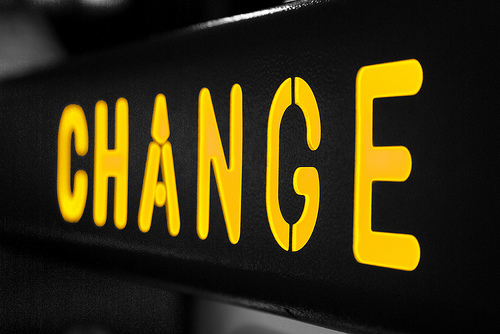Creating Change from Within
/ I've often spoken on The Changebase about social entrepreneurs who've chosen to radically reinvent how business creates social change in our communities and around the world.
Organizations like Kiva (microfinance), Carrotmob (conscious consumerism), and Frontline SMS (information access through technology) have literally re-drawn the lines when it comes to creating sustainable, empowered and effective change through grass-roots social entrepreneurship.
I've often spoken on The Changebase about social entrepreneurs who've chosen to radically reinvent how business creates social change in our communities and around the world.
Organizations like Kiva (microfinance), Carrotmob (conscious consumerism), and Frontline SMS (information access through technology) have literally re-drawn the lines when it comes to creating sustainable, empowered and effective change through grass-roots social entrepreneurship.
While the importance of these examples can't be overstated, if we only focus on social entrepreneurs we actually miss an entire population of changemakers who want to have an impact but can’t quit their day jobs.
What can these people do to create change in their communities and their environment, without reinventing the wheel?
Enter social intrapreneurship – a new movement centered around creating progress internally at existing organizations.
Ok, so this is an interesting concept, you might say. But what does this look like in practice?
From what I hear, it’s all about baby steps - that is, starting small and growing big. Maybe it’s just me but it seems everywhere I turn I hear stories of employees who mobilized themselves and insisted on small initial changes like improved recycling at their corporate office, company incentives for using public transportation, or time off to volunteer in the community. And from there the social intrapreneurship momentum just grew.
Another example: I recently had the chance to speak with someone in global citizenship at eBay, and I asked her what she thought made the company’s green efforts so successful. While she agreed with me that senior leadership buy-in is important, she pointed first to eBay’s employees as the single biggest driving force in creating change in the company.
It just so happens that much of their CSR efforts actually got started by a group of forty employees who came together to talk about little ways they could “green” the company – and from there it just snowballed. Now, more than 2000 employees in 23 countries are part of eBay’s Green Team – talk about a perfect example of real-life social intrapreneurship!
As a growing wave of MBA students (myself included) begins to dip their toes into the job hunt water, I find eBay’s story of creating change from within particularly inspiring. I know I want to work in CSR and sustainability, but I also know that these jobs are often really hard to find. If eBay's social intrapreneurship story tells us anything, it's that making change isn’t just about your job title or even your job function. No matter where any of us lands after graduation, we can each be changemakers in our organizations. And all it takes are some baby steps.
And that goes for all of you non-MBA students too!
It turns out that this isn't the first time I've extolled the virtues of social intrapreneurship. In fact, I was recently interviewed by my school, Boston University School of Management, as part of a promotional video meant to show prospective applicants how MBAs use their degrees to create change. Since I talk about social intrapreneurship in the clip, I thought I'd include it.
First up is BU Finance professor Yrjo Koskinan, then my classmate Susie Keane, and then me (I’m roughly two minutes and thirty seconds into the video).
Enjoy my 15 minutes of fame!
And going forward, ask yourself: how can I be a social intrapreneur and create change from within my own organization, school, or community?




 ool of Management
ool of Management


